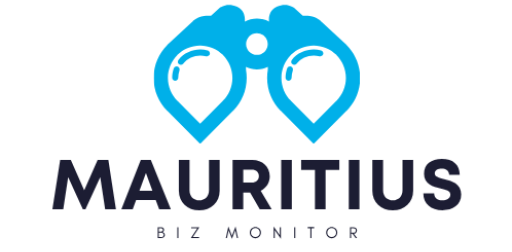Community Products and Understanding Member Needs
Building Community Products begins with a deep understanding of the members’ needs and behaviors. Successful products are tailored to address specific pain points, desires, and interests within the community. This involves conducting surveys, analyzing engagement patterns, and maintaining open communication channels to ensure that solutions are relevant and valued.
Segmenting community members based on demographics, interests, and interaction levels helps in prioritizing product features. By focusing on what matters most to the community, organizations can create offerings that not only meet immediate needs but also foster long-term loyalty and participation.
Community Products and Engagement Strategies
Effective Community Products are designed to actively engage members. Engagement strategies include gamification, exclusive content, personalized experiences, and community-driven events. These tactics encourage regular interaction, peer-to-peer support, and knowledge sharing, which in turn strengthens the bond between the product and its user base.
Tracking engagement metrics such as active participation, retention rates, and content sharing provides valuable insights. This data allows product managers to iterate and refine offerings continuously, ensuring that the product remains aligned with evolving community expectations.
Community Products and Sustainable Growth
The ultimate goal of Community Products is sustainable growth. By creating products that resonate deeply with the community, organizations can foster loyalty, advocacy, and organic expansion. Engaged communities often become ambassadors, spreading awareness and attracting new members who share similar interests or values.
Sustainable growth also relies on balancing monetization with value delivery. Products should provide tangible benefits without alienating members, ensuring that the community remains vibrant, active, and aligned with the organization’s vision for long-term success.
Community Products and Feedback Loops
Effective Community Products rely heavily on establishing continuous feedback loops. Gathering insights from community members allows product teams to identify what works, what needs improvement, and which features resonate most. Feedback can be collected through polls, surveys, focus groups, or direct interactions within the community, ensuring that development decisions are data-driven and community-centric.
By actively responding to feedback, organizations demonstrate that they value member input. This not only enhances the product experience but also fosters trust and loyalty, encouraging members to participate more actively and contribute ideas that shape the future evolution of the product.
Leadership Roles
Strong leadership within communities is essential for the success of Community Products. Leaders or moderators guide discussions, enforce community standards, and inspire participation. Their role is to maintain engagement, resolve conflicts, and cultivate a sense of belonging, which directly impacts the overall health and vibrancy of the community.
Organizations can support leadership by providing tools, training, and recognition, empowering leaders to act effectively. When leaders feel supported, they can dedicate more effort to fostering active participation, ensuring that the community remains cohesive, motivated, and aligned with the product’s mission.
Community Products and Long-Term Retention
Long-term retention is a critical measure of success for Community Products. Retention strategies focus on delivering continuous value, rewarding loyalty, and creating memorable experiences that keep members returning. This can include exclusive events, tiered benefits, recognition programs, or access to premium content that aligns with member interests.
Analyzing retention metrics helps identify patterns, challenges, and opportunities for improvement. By focusing on sustaining engagement over time, organizations can cultivate a resilient and thriving community that supports both product innovation and long-term business growth.
Monetization Strategies
Creating Community Products that are financially sustainable requires careful planning and strategic monetization. One approach is to offer tiered membership plans, where basic access remains free to encourage participation, while premium tiers provide exclusive content, services, or features. This ensures that the product remains accessible while generating revenue to support development and community initiatives.
Another strategy involves integrating value-added services such as workshops, webinars, or specialized tools that members can purchase. By offering tangible benefits, organizations can monetize without alienating the community. Transparency in pricing and clear communication about how funds are reinvested into the community enhances trust and encourages voluntary contributions.
Affiliate partnerships and sponsorships can also provide supplementary revenue streams. Collaborating with brands that align with community values ensures that monetization strategies are ethical and resonate with members. Ultimately, balancing revenue generation with meaningful value delivery is key to maintaining an engaged, loyal, and growing community.
Scaling Effectively
Scaling Community Products requires deliberate planning to manage growth while preserving the quality of engagement. Rapid expansion can strain resources, dilute community culture, and overwhelm moderators or leaders. Therefore, implementing scalable systems such as automated onboarding, structured communication channels, and robust moderation tools is essential.
Data-driven insights play a pivotal role in scaling. By analyzing participation trends, engagement metrics, and content performance, organizations can make informed decisions about which features to expand, which initiatives to replicate, and where additional support may be needed. This ensures that growth is sustainable and aligned with the community’s needs.
Training and empowering community leaders or ambassadors is also critical. Delegating responsibilities to trusted members allows for distributed management and helps maintain the quality of interaction. With proper systems, mentorship programs, and feedback loops in place, scaling Community Products can lead to widespread adoption while preserving the essence of the community.
Conclusion: Community Products as a Growth Engine
Community Products are more than just offerings; they are engines for engagement, loyalty, and sustainable growth. By understanding member needs, implementing effective engagement strategies, and carefully balancing monetization and scalability, organizations can build communities that thrive over time. Active participation, strong leadership, and continuous feedback are essential to maintain vibrancy and relevance.
For organizations looking to implement these strategies, our internal guide provides additional insights: Entrepreneurship Mauritius. Additionally, authoritative external resources such as Harvard Business Review – Building Products Around Communities offer valuable best practices and case studies.
In conclusion, Community Products represent a holistic approach to product development and community building. When executed thoughtfully, they drive engagement, foster loyalty, generate sustainable revenue, and create resilient communities that contribute meaningfully to business success and societal value.



